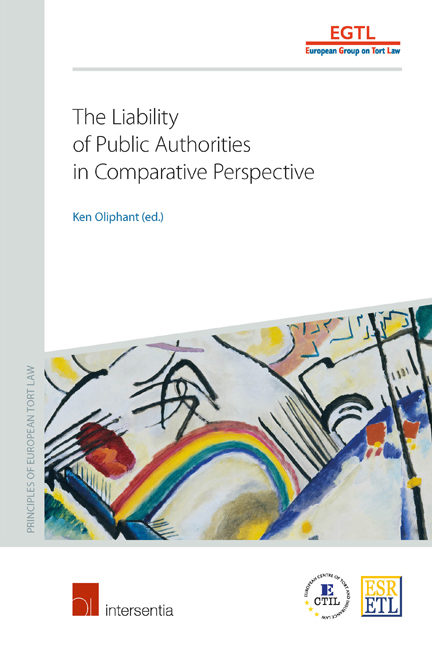Book contents
- Frontmatter
- Preface
- Contents
- List of Authors
- Introduction
- Questionnaire
- PART I PUBLIC AUTHORITY LIABILITY OUTLINED
- Austria
- Belgium
- Czech Republic
- Denmark
- England and Wales
- France
- Germany
- Greece
- Israel
- Italy
- The Netherlands
- Norway
- Poland
- Portugal
- South Africa
- Spain
- Switzerland
- The United States
- European Union
- The Liability of Public Authorities: an Economic Analysis
- PART II CASE STUDIES
- PART III CONCLUSIONS
The United States
from PART I - PUBLIC AUTHORITY LIABILITY OUTLINED
Published online by Cambridge University Press: 27 November 2017
- Frontmatter
- Preface
- Contents
- List of Authors
- Introduction
- Questionnaire
- PART I PUBLIC AUTHORITY LIABILITY OUTLINED
- Austria
- Belgium
- Czech Republic
- Denmark
- England and Wales
- France
- Germany
- Greece
- Israel
- Italy
- The Netherlands
- Norway
- Poland
- Portugal
- South Africa
- Spain
- Switzerland
- The United States
- European Union
- The Liability of Public Authorities: an Economic Analysis
- PART II CASE STUDIES
- PART III CONCLUSIONS
Summary
INTRODUCTION
OVERVIEW
An initial word about terminology. ‘Public authority liability’ is not the term that would be used in the United States to describe the rules governing liability of public entities. Instead, the almost universal terminology is ‘governmental liability’ or ‘governmental immunity’. One popular treatise does employ the term ‘public entities officers and employees’ liability, although it also uses ‘governmental entities’ liability when focused on the liability of those entities apart from their employees and officials.
Public authority liability in the United States, because of its federal system, is divided between states, which are co-equal sovereigns, and the United States. Federal law addresses the liability of the federal government and its employees, while state law governs the liability of individual states and their employees. One qualification to the above statement of source of law is that federal constitutional provisions can be the basis for liability of state employees and in some instances the basis for injunctive relief as well.
Although the traditional blanket immunity for sovereign entities has long since been abrogated, governmental entities and officials retain a large amount of freedom from tort liability, particularly with regard to ‘discretionary’ decisions made in the course of governing. This area of the law is dominated by statutes – with the Federal Tort Claims Act (FTCA) governing federal liability and virtually every state having its own counterpart. Public authority liability thus involves adoption of universal principles of private tort law, along with modifications – oft en in the form of limitations on the liability of public authorities – contained in the FTCA.
Pursuant to the FTCA, the federal government may be liable for actions in its sphere, including regulatory efforts. Similarly, state governments (and substate governmental units) may be liable for actions in their sphere, including regulatory actions.
With 51 independent state jurisdictions, there is considerable variation that exists in the law governing liability of public entities and public employees.
- Type
- Chapter
- Information
- The Liability of Public Authorities in Comparative Perspective , pp. 537 - 558Publisher: IntersentiaPrint publication year: 2016

